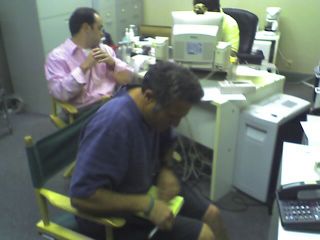Some food for thought on this beautiful Monday.
There is loads of hoopla in the news about Lance and his retirement. I've been running an informal poll on my web site for the past week asking if people are happy to see him retire (www.receplan.com). As of today, 27 votes for yes, 10 for no.
I intentionally left the language loose because I wanted to capture as many reasons as possible as to why people are happy or not to see Lance retire. Now that enough sample votes are in for me to guess what the results are, I'm starting to wonder what those reasons might really be. For example, could people be happy to see Lance retire because they're bored watching him dominate the Tour? do they have Lance-Lash? Or, do they just dislike Lance? How many of my voters are US residents versus, say, from France or Germany where love for Lance is scarce. Or, looking at it from a complete different angle, what portion of these folks is happy to see Lance retire so he can spend time with his kids, spend all his hard earned money, run for public office and sing back up for Sheryl Crow?
How about the loyal fans who are not happy to see him retire. They obviously connect with him in some way. How many might be cancer survivors who see Lance as a source of hope? How many are new to cycling and have not yet built immunity to the Lance Lone Star? How many are kids? How many women and how many men?
What ever the reasons might be, I know that as much as I have experienced Lance-Lash, I still get goose bumps watching some of the classic footage of him tear up the competition. I get goose bumps knowing I ran into him at the 1988 Texas Hill Country Triathlon, where the brash 15 year old was weaving stories about his girl friend. I still get goose bumps thinking this kid came back from near death to do what has never been done. All of these reasons, in addition to the ones I can't currently think of, motivate me to excel in my life...in all areas of my life.
The big question for me is whether I'd still get these nostalgic feelings about the power of Lance if he had not retired. For now, I will access my memory banks for the images, sounds and files of this amazing human being and marvel at this impact on the human race at this specific moment in time.
Long Live Lance!
Kam




